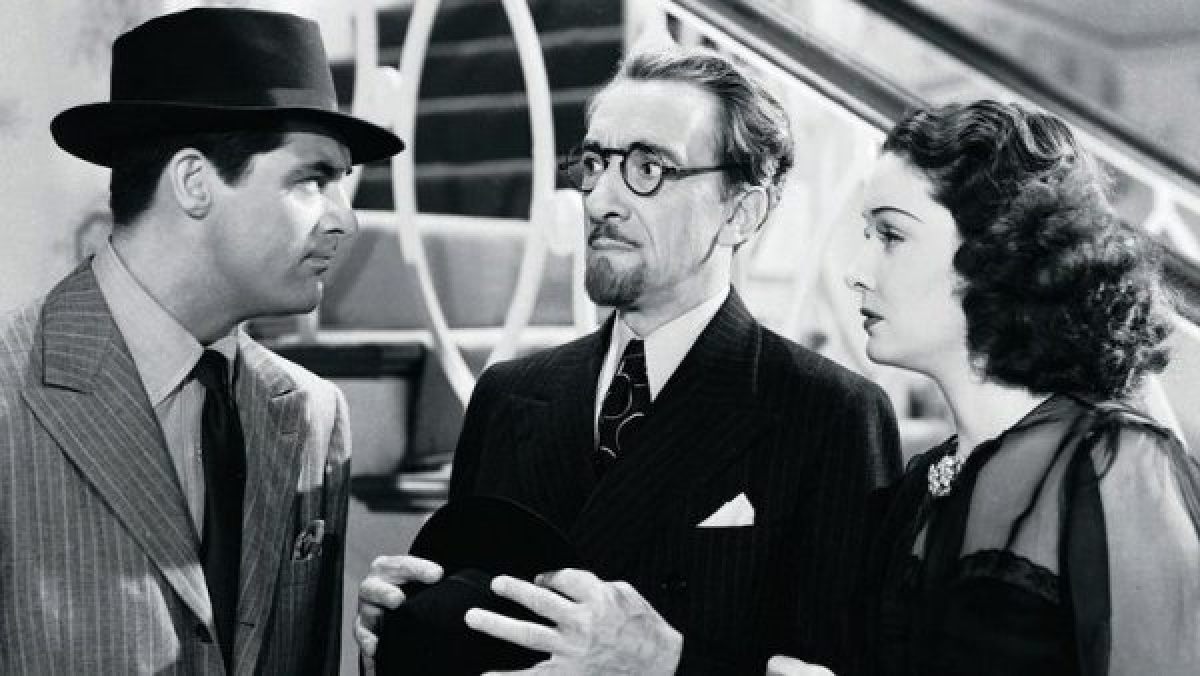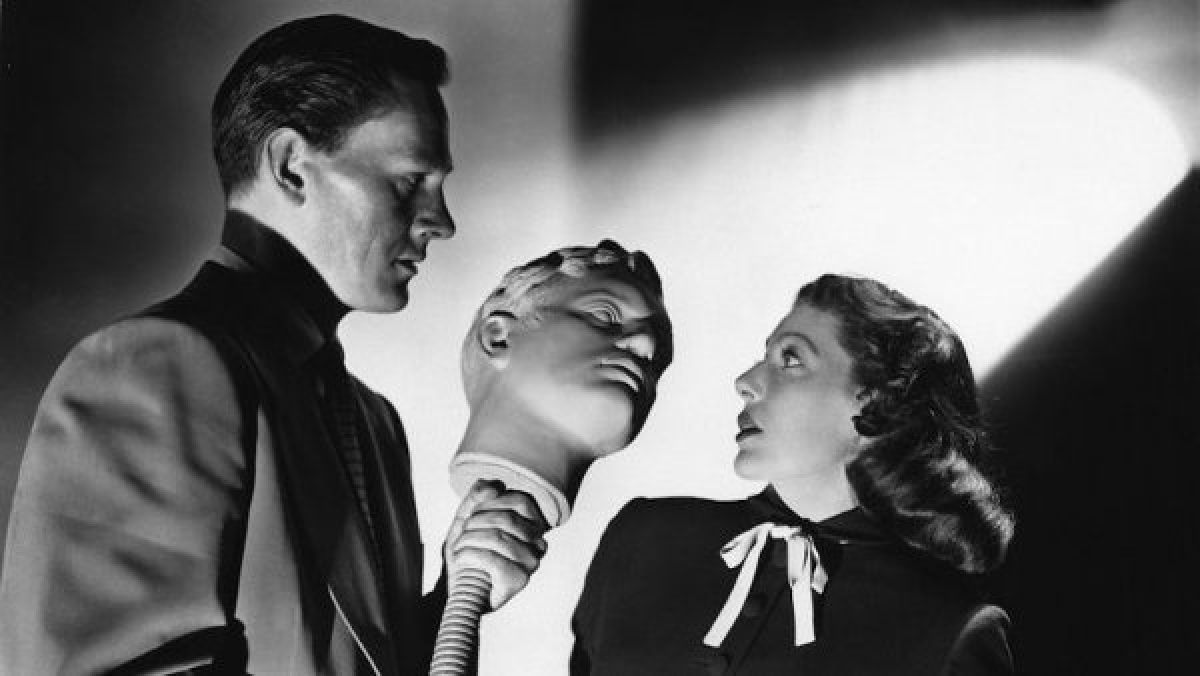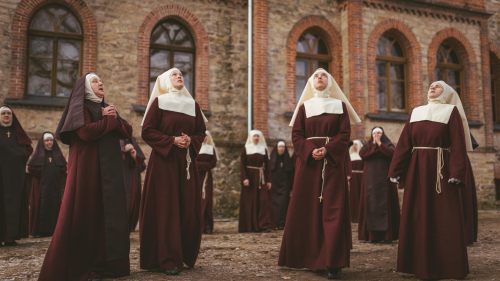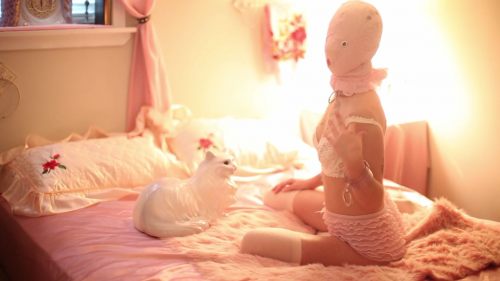Welcome To Noir City: Austin, Texas
Though it was the fifth year of Noir City - a traveling mini-festival celebrating '40s and '50s genre cinema that's held at the Ritz Drafthouse early each summer - host Eddie Muller (President of the Film Noir Foundation and programmer for TCM's Noir Alley) treated it like the first. "If you attend the whole program, you'll get an in-depth feel for the evolution of the era," he said in his welcome address, decked out in a slick suit jacket and shiny two-toned shoes.
Indeed, Muller wasn't kidding. As fun as these movies are to behold - pulpy, drug store paperback-ready thrillers, brought to life with ominous B&W flair - Noir City also becomes an educational session on one of Hollywood's most stylistically defined epochs. Having Muller on stage, guiding us through the particulars of each picture, was like having the most enthusiastic film school professor you always wanted, there to illuminate behind the scenes backstories, as well as highlight certain performances and aesthetic tics. Muller's intros to each title were also a crash course in borderline anti-auteurist theory, focusing on the producers, studios and stars, as opposed to giving credit to the mostly anonymous workmen behind the camera.
Out of the ten movies shown, I attended seven. All but one were projected on glorious 35mm celluloid, transporting me back to an era men where (dis)honorable gangsters ruled supreme, women were "dames", and cigarette smoke filled every frame, drifting through shafts of light as the labyrinthine plots twisted and turned. Here's what I found up in those clouds of gunsmoke and nicotine...
*****

I Wake Up Screaming [1941, 35mm / d. Bruce Humberstone, w. Dwight Taylor]
One of the very first American pictures produced during the heralded "film noir" epoch - predating the typically marked "starting year" of 1944 - H. Bruce Humberstone (Charlie Chan At The Olympics ['37]) crafted this shadowy, 20th Century Fox precursor as a starring vehicle for Betty Grable (with whom Humberstone would work again on Pin Up Girl ['44]). Yet for all the portentous visual window dressing, and a plot revolving around a missing diner waitress turned debutante (Carole Landis), the sports promoter (Victor Mature) who made her, and the obsessed cop (Laird Cregar) who will stop at nothing to prove the bon vivant boyfriend murdered her, I Wake Up Screaming is a rather breezy, funny affair. Originally titled Hot Spot - a name the picture would be known as outside of America - Dwight Taylor's script balances its yellow-paged pulp perversions with a rather snappy sense of humor, never fully committing to the grim, upsetting storytelling tendencies that would overtake the era's most prominent pictures. The constant flashbacks, folding the narrative unto itself, and Cregar's imposing, Wellesian presence (not to mention that Vincent Price voice) are the real story here, delivering a structure that's never less than engrossing, plus a heavy who's genuinely menacing every time he appears on screen. So, while box office legend Betty Grable may be the marquee name on this rather stark slice of entertainment, it's really the unsettling antagonist (who would sadly pass away three years later at the age of thirty-one) who walks away as the real star.

Quiet Please, Murder [1942, 35mm / d. & w. John Francis Larkin]
The lightness continues in Quiet Please, Murder - a celluloid rarity our host referred to as a "biblionoir". For all the Shakespeare forgery, Nazi collectors, ace swindlers, private dicks, bloody stabbings, cold blooded shootings, and a femme fatale playing all sides (the stunning Gail Patrick), John Francis Larkin's literature lark is just that: sort of an extended, sick joke. Teaming up with a pain-obsessed swindler - George Sanders, wringing every line delivery for maximum lecherousness - the entirety of the movie's last act transpires inside a library locked down by a team of thieves, all looking to swipe a set of rare books. Quiet Please, Murder packs a ton of movie into its B&W reels. Where I Wake Up Screaming always feels slightly heightened, this is a downright pulp anti-reality, comprised of scene after scene of catty chatter and silenced pistols having the last word. There are even horror movie monsters contained in its sparse narrative, as a deaf, fascist ogre (Kurt Katch) strangles his victims from behind. There may be a reason the writer/director only made one other feature (Circumstantial Evidence ['45]): his sense of humor probably wasn't for everyone, especially during as scary a time as World War II.

I Walk Alone [1947, DCP / d. Byron Haskin, w. Charles Schnee]
Based on the cast alone - Burt Lancaster, Kirk Douglas, Lizabeth Scott - you’d think I Walk Alone was a Capital A-Picture, worthy of a more esteemed reputation within the noir canon. Yet apparently rights issues (as Universal bought a solid portion of Paramount’s catalog) rendered producer Hal Wallis' protégé showcase – Scott was his mistress for many years – somewhat difficult to show. Restored at the request of the Film Noir Foundation, the new DCP (the only digitally presented film of the entire weekend) looked spectacular, even if I Walk Alone hits the same melancholy note time and again in its tale of old gangsters screwing one another out of prestige and a percentage. It’s somewhat easy to understand why Noir City/Alley host Eddie Muller considers it essential – Lancaster’s sent up bootlegger stands in for the Cagney-esque Tommy Gun warriors of ‘30s crime cinema, transplanted into a new “legit” age of misdeeds – but that doesn’t make the mostly rote melodrama any easier to sit through. There’s certainly value to seeing Lancaster and Douglas in their prime and sharing a frame (not to mention quite a bit of homoerotic tension), but this adaptation of Theodore Reeves' stage play lacks any real spark of brilliance.

The Accused [1949, 35mm / d. William Dieterle, w. Ketti Frings]
Loretta Young was allegedly raped by Clark Gable and, due to this non-consensual encounter, gave birth to his bastard child. This extra-textual information only helps to strengthen her already remarkable performance in The Accused, as a dowdy college professor who kills one of her students (Douglas Dick) in self-defense after he attempts to force himself on her. Another Hal Wallis production, The Accused feels ahead of its time, as every man who surrounds this terrified teacher falls in love with her, despite suspecting all along that she’s the only potential guilty party, based on circumstantial evidence. But what director William Dieterle and screenwriter Ketti Frings - bringing a distinctly feminine perspective to the grim proceedings - do best is lock us in with a victim tormented by guilt, even when we know there’s truly nothing she should feel sorry for. Young was reportedly a notoriously upright citizen on set - to the point that she’d set up “swear jars” that her co-stars had to make deposits in whenever they used foul language - making her prim spinster educator feel all the more autobiographical. Here was an actress operating at the height of her powers, yet she still felt harassed and uncomfortable in the environment she was supposed to create art in every day.

The Underworld Story [1950, 35mm / d. Cy Endfield, w. Henry Blankfort]
The cynical gem of the weekend, The Underworld Story finds a disgraced scumbag reporter (Dan Duryea) purchasing a primary share in a small New England paper, only to use that publication as a beacon of capitalist sensationalism when a young black woman (Molly Anderson) is falsely accused of murdering the local news magnate's daughter. Acidic in its worldview regarding both the systems of justice and those who report on criminal proceedings, blacklisted director Cy Endfield (with the help of Magnificent Ambersons ['42] cinematographer Stanley Cortez) creates this chilly tableau of corrupt institutions infecting even the most isolated, blue blooded American locales. Yet there's also a through-line about history repeating itself, as these Old World patriots constantly reference the Salem Witch Trials, reminding us that there were always outsiders that the American upper crust were looking to burn at the stake.

The Unsuspected [1947, 35mm / d. Michael Curtiz, w. Ranald MacDougall]
Casablanca ('42) director Michael Curtiz allegedly dogged Orson Welles to play the part of Victor Grandison in The Unsuspected, and that makes perfect sense. Grandison is the fictional golden-throated host of a popular true crime series, going as far as interviewing guilty parties and keeping the truth behind their crimes hidden, should it make for great radio. But when Welles was too busy (read: "not broke enough") to come slip into the nefarious narrator's loafers, Curtiz went and got Claude Rains to play the part of a diabolical mastermind, who ends up staging his own set of sordid activities when his beautiful, thought dead niece (Joan Caulfield) reappears in his life, along with a rather curious gentleman (Michael North) claiming to be the husband she doesn't remember marrying. It all turns into a delightfully lurid game of murder and madness that feels like a precursor to both William Castle spook shows and Italian gialli - black gloves being slipped on whenever it's time for the deed to be done. Having Alan K. Rode - author of Michael Curtiz: A Life In Film - on hand as our guide to these pictures on the last day was a real lifesaver, as his rather astute insights into both the period and the performers elevated the entire experience, from a pure educational standpoint.

The Threat [1949, 35mm / d. Felix Feist, w. Dick Irving Hyland]
The final film of the fest - at least for this writer - was a blunt, no-nonsense exercise in pure B-Movie craftsmanship. Running a down and dirty 66 minutes, The Threat finds Charles McGraw (in all his gravelly voiced glory) tearing up the countryside following a prison break. Hell-bent on getting revenge on the D.A. (Frank Conroy) and Detective (Michael O'Shea) who put him behind bars, Felix Feist's brutal programmer is essentially one act of kidnapping and violence after another. The style is toned down in favor of presenting an almost procedural approach to a madman's rampage, never letting its foot off the gas until we arrive at the fatalistic finale. McGraw's screen presence is a thing of legend - surly, nasty, rude - and he's tapping into every last ounce of unseemly energy he had stored in his belly, just so we all fear his Arnold 'Red' Kluger with every molecule of our being. This was a fitting end to Noir City for me, as when the credits rolled, I was sent out of the Ritz having been educated in "Film Noir A to B", quite literally.



